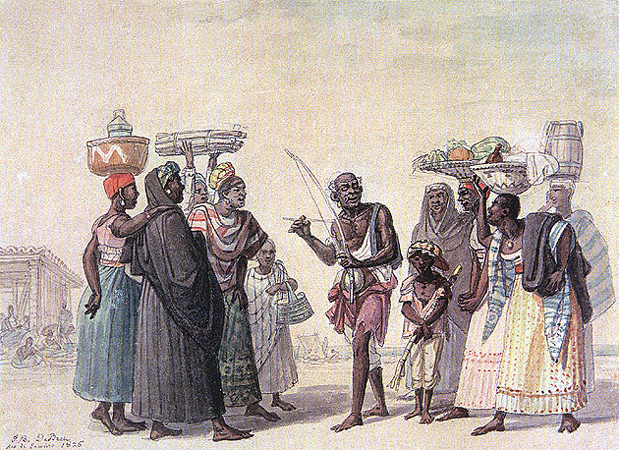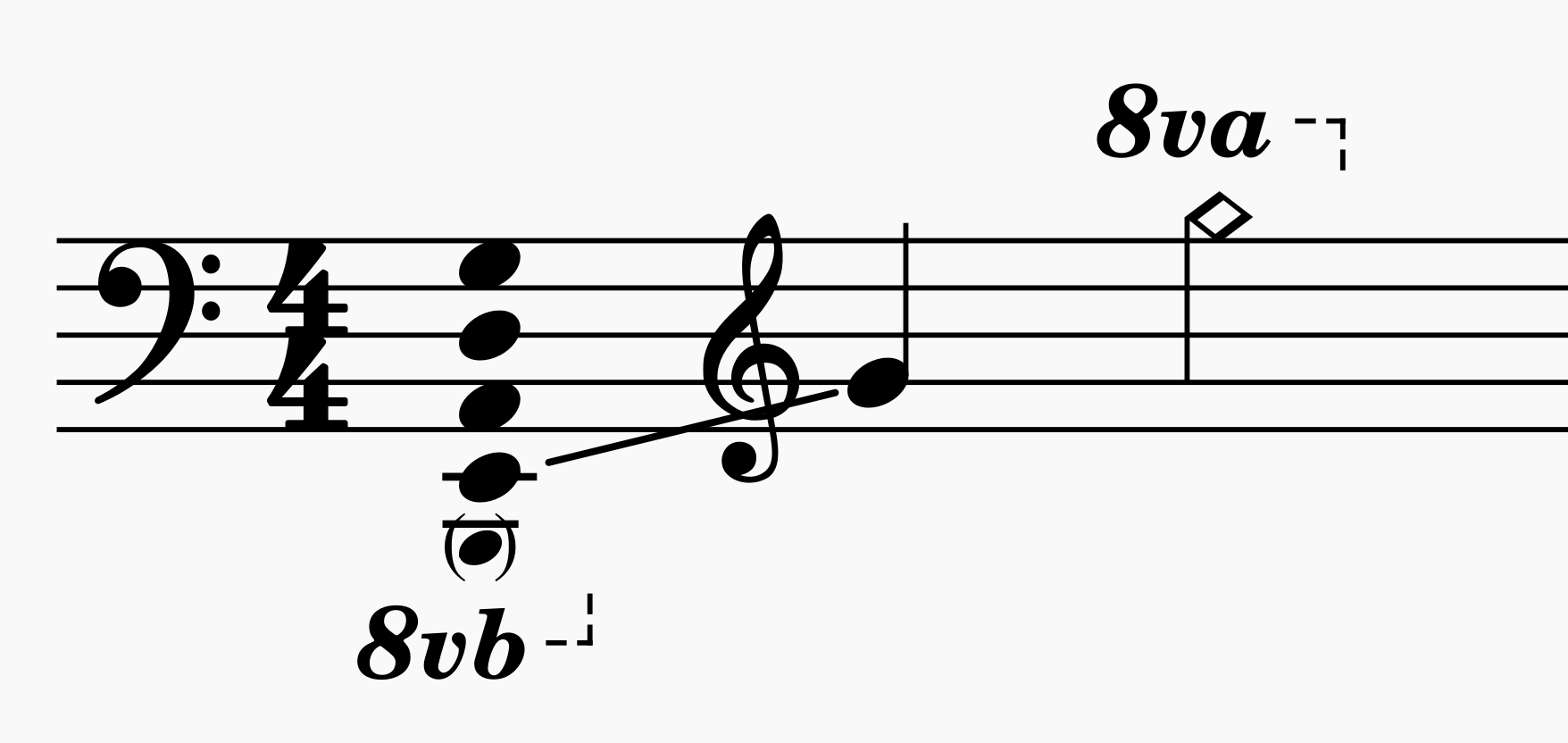|
Da Lama Ao Caos
''Da Lama ao Caos'' () is the debut album by the Brazilian band Chico Science & Nação Zumbi. Released in 1994, the album presents a fusion of funk rock and maracatu and contributed for spreading the music of Pernambuco around the world. ''Da Lama ao Caos'' is considered the manifesto of the Manguebeat movement. It was listed by ''Rolling Stone'' Brazil as one of the 100 best Brazilian albums in history (13th position). The magazine also voted its title track as the 22nd greatest Brazilian song. Cover The album cover, conceived by director Hilton Lacerda, is a collage of images that appear to be "pixilated", with each pixel being a different collage. The back cover is picture of a crab's claw, purportedly zoomed-in so it becomes pixilated and it becomes clear that the image had been developed with a computer. The first version of the artwork was in black-and-white with some blue shades, but the label refused it, demanding more colors, and that's how the final version was born ... [...More Info...] [...Related Items...] OR: [Wikipedia] [Google] [Baidu] |
Chico Science & Nação Zumbi
Chico () means ''small'', ''boy'' or ''child'' in the Spanish language. It is also the nickname for Francisco in the Portuguese language (). Chico may refer to: Places *Chico, California, a city *Chico, Montana, an unincorporated community *Chico, Texas, a city *Chico, Washington, a census designated place *Chico River (other) *Río Chico (other) * Chico Creek, Colorado * Chico Formation, a Mesozoic geologic formation in the US *Chico, or Ch'iqu, a volcano in Bolivia People Nickname *Alfred "Chico" Alvarez (1920–1992), Canadian trumpeter *Chico Anysio (1931–2012), Brazilian actor, comedian, writer and composer *Francisco Aramburu (1922–1997), Brazilian footballer * Chico Bouchikhi (born 1954), musician and a co-founder of the Gipsy Kings, later leader of Chico & the Gypsies *Chico Buarque (born 1944), Brazilian singer, guitarist, composer, dramatist, writer and poet *Chico (footballer, born 1981), Portuguese footballer Francisco José Castro Fernandes *Chi ... [...More Info...] [...Related Items...] OR: [Wikipedia] [Google] [Baidu] |
Fred Zero Quatro
Fred 04 (born in Jaboatão dos Guararapes, Pernambuco, on July 11, 1965) is the leader, singer, guitarist and Cavaquinho player of Brazilian band Mundo Livre S/A. He is the co-author, along with DJ Renato L, of the Mangue Bit manifesto, "Caranguejos Com Cérebros" ("Crabs With Brains"). He has a degree in journalism. He made up his nickname '04' after the two last digits in his identity document An identity document (also called ID or colloquially as papers) is any documentation, document that may be used to prove a person's identity. If issued in a small, standard credit card size form, it is usually called an identity card (IC, ID c .... References External links Mundo Livre S/A official page 1965 births Living people 20th-century Brazilian male singers 20th-century Brazilian singers 21st-century Brazilian male singers 21st-century Brazilian singers Brazilian male guitarists People from Jaboatão dos Guararapes 21st-century conductors (music) {{Brazil ... [...More Info...] [...Related Items...] OR: [Wikipedia] [Google] [Baidu] |
Screaming
A scream is a loud vocalization in which air is passed through the vocal cords with greater force than is used in regular or close-distance vocalisation. This can be performed by any creature possessing lungs, including humans. A scream is often an instinctive or reflex action, with a strong emotional aspect, like fear, pain, annoyance, surprise, joy, excitement, anger, etc. Troponyms A large number of words exist to describe the act of making loud vocalizations, whether intentionally or in response to stimuli, and with specific nuances. For example, an early twentieth century synonym guide places variations under the heading of "call", and includes synonyms such as: bawl, bellow, clamor, cry (out), ejaculate, exclaim, roar, scream, shout, shriek, vociferate, and yell, each with its own implications.James Champlin Fernald, "Call", ''English Synonyms and Antonyms: With Notes on the Correct Use of Prepositions" (1914), p. 136-37. This source states: Another source propose ... [...More Info...] [...Related Items...] OR: [Wikipedia] [Google] [Baidu] |
Berimbau
The berimbau () is a single-string percussion instrument, a musical bow, originally from Africa, that is now commonly used in Brazil. The berimbau would eventually be incorporated into the practice of the Afro-Brazilian martial art '' capoeira'', the berimbau leads the capoeiristas movement in the ''roda''—the faster the berimbau is playing the faster the capoeirista moves in the game. The instrument is known for being the subject matter of a popular song by Brazilian guitarist Baden Powell, with lyrics by Vinicius de Moraes. The instrument is also a part of Candomblé-de-caboclo tradition. History The berimbau's origins have not been fully researched, though it is most likely an adaptation of African gourde musical bows, as no Indigenous Brazilian or European people use musical bows. The way the ''berimbau'' and the ''m'bulumbumba'' of southwest Angola are made and played are very similar, as well as the tuning and basic patterns performed on these instruments. ... [...More Info...] [...Related Items...] OR: [Wikipedia] [Google] [Baidu] |
André Jung (musician)
André Jung (born May 12, 1961) is a Brazilian drummer and journalist, best known for his performances in the band Ira!. He has also been a member of Titãs, although he has released only one album (Titãs) with them. Curiously, the drummer that he replaced in Ira! (Charles Gavin) went to play with Titãs, with whom he played with until 2010. André studied journalism at the Communication and Arts School (ECA) of the University of São Paulo and writes columns for sites and newspapers. Currently has a new band named Urban ToTem, alongside former acoustic tour members of IRA! such as Michelle Abu and Jonas Moncaio. Discography With Titãs * ''Titãs Titãs () are a Brazilian rock band from São Paulo. Though they basically play pop/alternative rock, their music has touched a number of other styles throughout their 30-year career, such as new wave, punk rock, grunge, MPB and electronic mu ...'' (1984) With Ira! With Urban ToTem * ''Urban ToTem'' (2008) External lin ... [...More Info...] [...Related Items...] OR: [Wikipedia] [Google] [Baidu] |
Alfaia
The alfaia is a Brazilian membranophone. It is a wooden drum made of animal skin tensioned or loosened through ropes placed alongside the body of the instrument. Alfaias are usually between and in diameter. Their construction is similar to 19th-century American and European military or field drums, and Latin American wooden bass drums. Their drumheads are clamped to the body through large wooden hoops, and they are played with distinctly-shaped thick wooden drum sticks. Sometimes the stick used in the dominant hand In human biology, handedness is an individual's preferential use of one hand, known as the dominant hand, due to it being stronger, faster or more Fine motor skill, dextrous. The other hand, comparatively often the weaker, less dextrous or sim ... is marginally larger than the one used in the weak hand. Traditionally strapped over the shoulder, alfaias are played with a distinctive technique in which players hold the weak-hand drum stick inverted to get th ... [...More Info...] [...Related Items...] OR: [Wikipedia] [Google] [Baidu] |
Snare Drum
The snare (or side drum) is a percussion instrument that produces a sharp staccato sound when the head is struck with a drum stick, due to the use of a series of stiff wires held under tension against the lower skin. Snare drums are often used in orchestras, concert bands, marching bands, parades, drumlines, drum corps, and more. It is one of the central pieces in a drum set, a collection of percussion instruments designed to be played by a seated drummer and used in many genres of music. Snare drums are usually played with drum sticks, but other beaters such as the brush or the rute can be used to achieve different tones. The snare drum is a versatile and expressive percussion instrument due to its sensitivity and responsiveness. The sensitivity of the snare drum allows it to respond audibly to the softest strokes, even with a wire brush. It can be used for complex rhythmic patterns and engaging solos at moderate volumes. Its high dynamic range allows the player to produce ... [...More Info...] [...Related Items...] OR: [Wikipedia] [Google] [Baidu] |
Percussion
A percussion instrument is a musical instrument that is sounded by being struck or scraped by a beater including attached or enclosed beaters or rattles struck, scraped or rubbed by hand or struck against another similar instrument. Excluding zoomusicological instruments and the human voice, the percussion family is believed to include the oldest musical instruments.'' The Oxford Companion to Music'', 10th edition, p.775, In spite of being a very common term to designate instruments, and to relate them to their players, the percussionists, percussion is not a systematic classificatory category of instruments, as described by the scientific field of organology. It is shown below that percussion instruments may belong to the organological classes of ideophone, membranophone, aerophone and cordophone. The percussion section of an orchestra most commonly contains instruments such as the timpani, snare drum, bass drum, tambourine, belonging to the membranophones, ... [...More Info...] [...Related Items...] OR: [Wikipedia] [Google] [Baidu] |
Electric Bass
The bass guitar, electric bass or simply bass (), is the lowest-pitched member of the string family. It is a plucked string instrument similar in appearance and construction to an electric or an acoustic guitar, but with a longer neck and scale length, and typically four to six strings or courses. Since the mid-1950s, the bass guitar has largely replaced the double bass in popular music. The four-string bass is usually tuned the same as the double bass, which corresponds to pitches one octave lower than the four lowest-pitched strings of a guitar (typically E, A, D, and G). It is played primarily with the fingers or thumb, or with a pick. To be heard at normal performance volumes, electric basses require external amplification. Terminology According to the ''New Grove Dictionary of Music and Musicians'', an "Electric bass guitar sa Guitar, usually with four heavy strings tuned E1'–A1'–D2–G2." It also defines ''bass'' as "Bass (iv). A contraction of Double bass ... [...More Info...] [...Related Items...] OR: [Wikipedia] [Google] [Baidu] |
Electric Guitar
An electric guitar is a guitar that requires external amplification in order to be heard at typical performance volumes, unlike a standard acoustic guitar (however combinations of the two - a semi-acoustic guitar and an electric acoustic guitar exist). It uses one or more pickups to convert the vibration of its strings into electrical signals, which ultimately are reproduced as sound by loudspeakers. The sound is sometimes shaped or electronically altered to achieve different timbres or tonal qualities on the amplifier settings or the knobs on the guitar from that of an acoustic guitar. Often, this is done through the use of effects such as reverb, distortion and "overdrive"; the latter is considered to be a key element of electric blues guitar music and jazz and rock guitar playing. Invented in 1932, the electric guitar was adopted by jazz guitar players, who wanted to play single-note guitar solos in large big band ensembles. Early proponents of the electric guitar ... [...More Info...] [...Related Items...] OR: [Wikipedia] [Google] [Baidu] |




